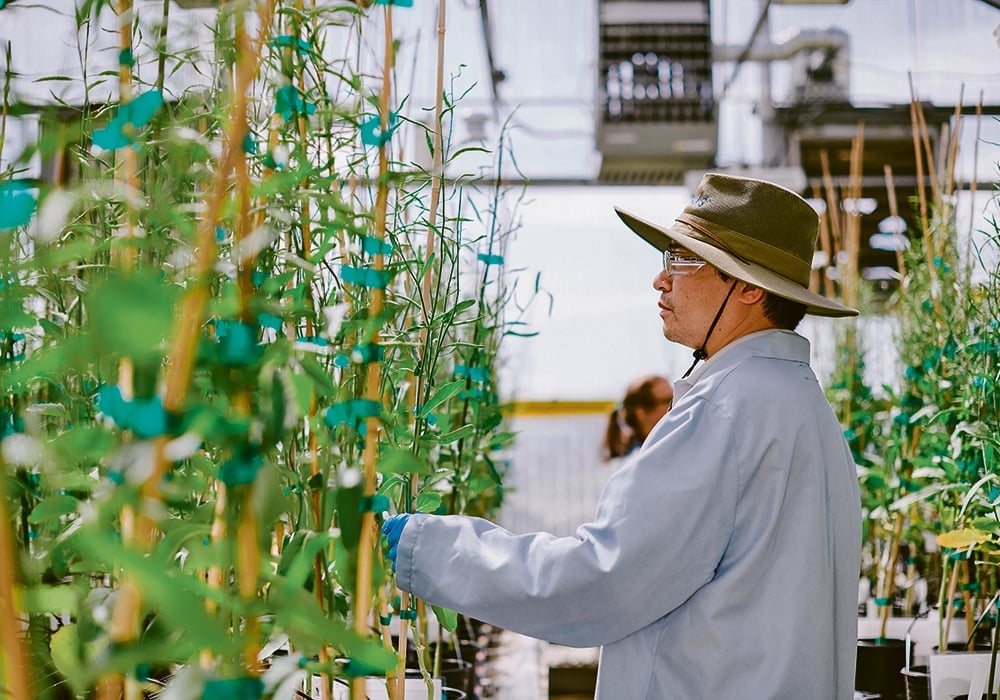EU loosens rules for new genomic techniques

Glacier FarmMedia – A European Parliament decision last month to adopt new rules for what it calls new genomic techniques (NGTs) is good news for agriculture and international trade, say industry and academic experts.
Read Also

Online mapping tool offers agricultural land use information
Glacier FarmMedia – A new online tool allows users to examine agricultural land use across the country. Developed by ALCES…
“Science has been under a very dark cloud for a long time in Europe, and so now I think we’re seeing those clouds are breaking up and we’re seeing some sunshine finally,” said Stuart Smyth, a professor in the University of Saskatchewan’s Department of Agricultural and Resource Economics.
Why it matters: The European Union has been slow to adopt crop technologies such as GMO, which has limited trade opportunities and for North American farmers.
Until now, all such technologies were caught under a European Court of Justice ruling that said crops created with NGTs such as gene editing were genetically modified organisms.
In this context, GMOs are those crops that are produced using transgenic techniques — that is, they use genes from another organism such as a bacteria to produce a desired trait such as herbicide resistance.
GMOs will remain under the same strict regulations that have effectively banned their cultivation in Europe for decades.
The new rules, which now go to individual EU states for consideration and approval, create two new categories: NGT1 and NGT2.
The first category, NGT1, covers plants that are equivalent to those developed by conventional breeding. These won’t need to clear special regulatory hurdles.
The NGT2 category covers crops that use certain other gene editing techniques. These will be subject to much the same requirements as GMOs but with a commitment to “accelerate the risk assessment procedure for NGT2 plants expected to contribute to a more sustainable agri-food system.”
“The stage one stuff, I think they got right and there’s going to be investments and research moving forward in that space,” Smyth said.
“The second one is probably going to be hung up in greenhouses and stuff until there gets to be a little bit more clarity and certainty as to how it applies and to what it applies. So that may take another couple of years.”
The proposed regulations would also ban patents on all NGT plants to “avoid legal uncertainties, increased costs and new dependencies for farmers and breeders.”
For Rory Riggs, the pending EU regulations are great news.
Riggs is chief executive officer and co-founder of Cibus, Inc., a biotechnology company based in San Diego. It is devoted to producing traits in five main crops: canola, corn, wheat, rice and soybeans.
The company then licences these traits to major multinational seed companies to incorporate into their varieties.
Riggs said transgenics were quickly adopted by farmers when they were introduced in the 1990s. For example, crops such as soybeans, corn and cotton were engineered to express a protein from the soil microbe Bacillus thuringiensis. Organic farmers and municipalities use Bt preparations to control pests such as mosquitoes.
Likewise, the Bt protein in GM crops protect against insect pests.
“That’s a $4 billion a year trait, on 300 million acres. That was really the start of the business,” he said.
“And then when Europe banned it … that’s why yesterday’s vote was so important. Basically, the industry shut down and unless you had gene editing, it wasn’t going to be able to re-start,” he said.
Since then, gene editing techniques have arrived. Perhaps the most well-known of these is CRISPR Cas-9, which secured a Nobel Prize for its inventors, U.S. biochemist Jennifer Doudna and French microbiologist Emmanuelle Charpentier, in 2020.
While it opened enormous potential for crop breeding, Riggs says CRISPR has the limitation of only being able to work with what is already there. That is, it can turn a gene on or off, but it can’t add anything new.
CRISPR-edited plants also land in the NGT2 category under the new proposed EU regulations.
Cibus, founded in 2001, the same year the EU banned GMOs, chose other ways to work with genes. While these have rather cumbersome names such as oligonucleotide-directed mutagenesis, prime editing and base editing, the bottom line is they allow new genes, and therefore traits, to be created.
“Those are the three main platforms,” Riggs says.
“Ours is a different platform because we naturally change these (genetic) letters, but we do it in a way that is indistinguishable from nature.”
This feature of the Cibus platform — a suite of proprietary technologies it calls its Rapid Trait Development System — allows it to be classified as NGT1 under the proposed EU regulations. That is, it will be treated essentially the same as conventional breeding. It is also much faster, something Riggs says has won it the endorsement and business of large seed companies.
“They told everybody, ‘Cibus can do in three years what it takes us 16 and a half years and $115 million to do,’” he said.
“So, there’s a chance in our lifetime we can make the changes for climate change that you expect to make.”
This aligns with the stated goals of the proposed EU regulations — “to make the food system more sustainable and resilient by developing improved plant varieties that are climate resilient, pest resistant and give higher yields or that require fewer fertilizers and pesticides.”
Smyth says this points to the realization that the EU must reach its international obligations under the Paris climate agreement, and to do so, it will need to accelerate innovation in its agriculture.
– Michael Robin is a reporter with The Western Producer.
Source: Farmtario.com

